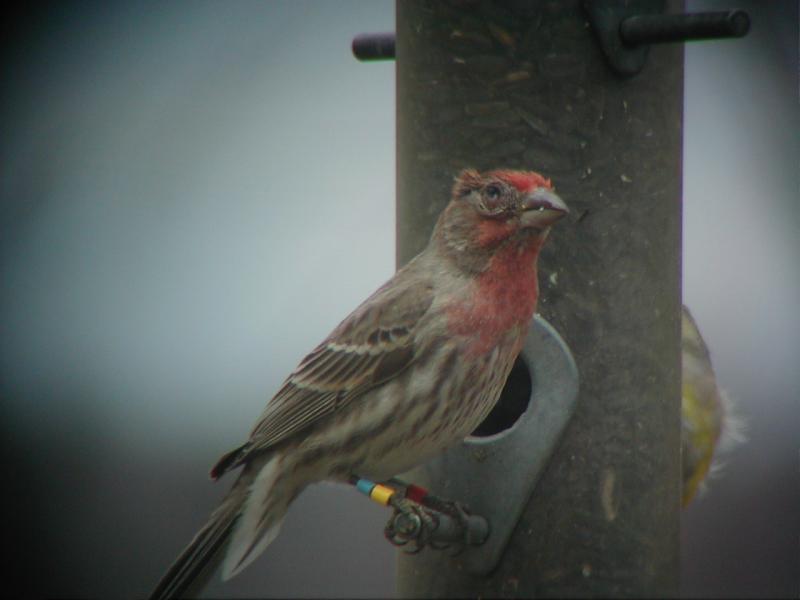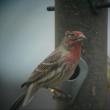Gesundheit to the birds
As more of us struggle at this time of year with colds and the flu, it made us think about illnesses and disease in birds and how this might have an impact on their population numbers.
Recently someone posted a photo to the MaineBirds Listserve of a bohemian waxwing with a strange, tumor-like growth under the bill. We’re not trained in diagnosing bird disease, but this could be a case of a bird with avian pox, a common viral infection in birds that causes abnormal, often tumor-like growths on the legs, feet, bill, and eyes. This is just one of many diseases and illnesses that can strike birds.
Although the bohemian waxwing in the recently posted photo appeared to still be able to eat, avian pox growths can eventually cause severe problems that prevent birds from eating, seeing, or escaping predators. Just like in humans, most of the illnesses that affect birds are spread by close contact with infected individuals. Winter is when survival conditions in our area are the most harsh and when many birds gather into large flocks and are more likely to become infected.
Most of us rarely see sick wild birds, let alone those that die of sickness, but some illnesses and diseases strike down immense numbers of birds. The so-called house finch eye disease, mycoplasmal conjunctivitis, is actually a version of a common disease of commercial poultry that was first detected in wild bird populations (in house finches) in 1994.
The disease spread rapidly, apparently because infected liquids from the eyes of stricken birds may have been smeared on bird feeders and other surfaces and passed to other individuals in house finch flocks. Birds would not immediately die of the disease but could move around and spread the disease to other areas over time. It is thought that hundreds of millions of house finches died in the initial early years of the epidemic.
Many of us will remember the first discovery of West Nile virus in the U.S. in 1999 and the subsequent spread of the disease across the U.S. Although of concern to us humans, West Nile virus is especially dangerous for birds, having killed millions of them, with crows seeming to be one of the species that has shown a high rate of mortality from the disease. Spread by mosquitoes, West Nile is one disease that isn’t a problem during our cold Maine winter.
There are a number of fungal and bacterial illnesses birds can pick up in and near our backyard bird feeding stations including salmonellosis and aspergillosis. Regularly cleaning bird feeders by soaking them for a few minutes in a solution of one part bleach to nine parts water and then letting them air dry helps keep their surfaces clean. Raking up old seed hulls and food remnants from under the feeder can prevent the growth of fungi and bacteria that ground feeders could pick up. And when conditions are already as harsh as they have been this winter for birds (and humans!), anything we can do to make it less likely that our neighborhood birds don’t get sick is worth doing.
Event Date
Address
United States

























